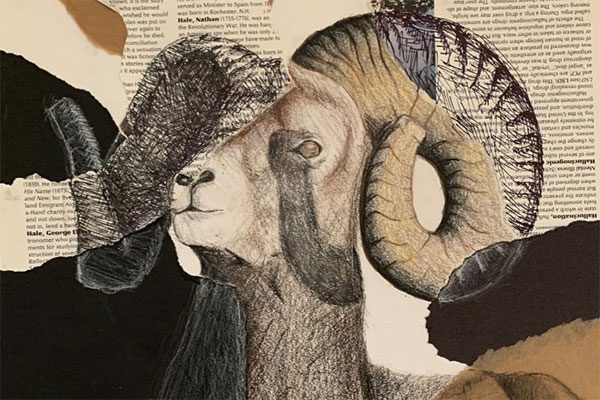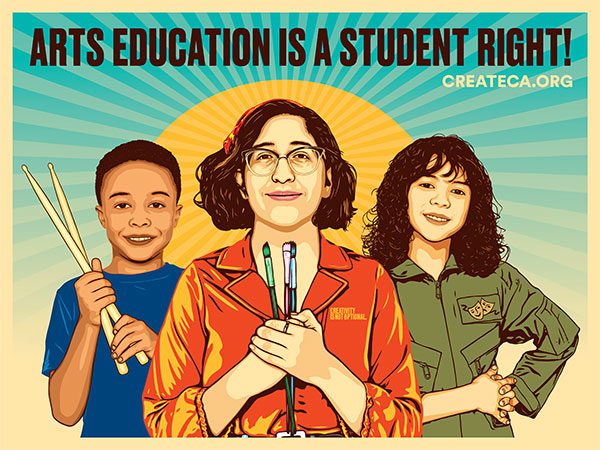
 Written by Tina LaPadula
Written by Tina LaPadula
The past two years have been especially challenging for educators and students, as we all struggle to find space for restorative and creative learning.
This year’s Creative Advantage Professional Learning Series endeavored to address the rising tension and anxiety with goals to support reflection, healing, and community building. Supported by Regan Pro, Education and Community Programs Director from Seattle Art Museum and Lara Davis, Seattle Office of Arts & Culture’s Arts Education Manager, my co-facilitators Shontina Vernon, Donte Felder and I created a map for the journey we hoped to guide participants through.
We had 3 opportunities to teach the workshop together, so worked iteratively and moved components around as we honed in on the most mindful sequence of stepping stones. We discussed our own classroom struggles this year and decided to center our exploration on a series of questions.
 What is culture?
What is culture?
The day began with a walking meditation that Shontina facilitated followed up with a writing activity she uses with incarcerated youth exploring these prompts – Who claims you? What was happening at the time you were born and at the time you were coming of age?
Participant responses featured story snippets of family and loved ones peppered with generational details ranging from scrunchy hair bands to slain civil rights leaders. We then unpacked how our worldview, artistic practice and our approach to teaching have been shaped by these formative experiences. We explored how beliefs, attitudes, and behaviors are represented in our familial, societal, institutional, and organizational cultures, and named aspects of our acculturation we inherit versus that which we actively seek to create.
Who gets to decide what is relevant?
After lunch the conversation shifted to pop culture. We considered what people in the future will say is happening now; Black Lives Matter, The Me Too Movement, ICE raids, school shootings, student protests, homelessness. Donte wondered what our students find relevant. He modeled an examination of classroom content that he’s used with his Orca K-8 students using the lyrics to Black Panther by Kendrick Lamar.
 What does freedom look like in your classroom? In your practice?
What does freedom look like in your classroom? In your practice?
My co-facilitators and I shared some critical questions we ask ourselves as a strategy to help us consistently examine the content we bring into our classrooms, check our biases, and support our students.
- Is it anti-racist?
- Is it intersectional?
- What does it say relative to representation?
- Is it complex or one-dimensional?
- Does it promote archetypes or stereotypes?
- What was happening historically as it relates to its origin?
Participants broke into small groups to incubate a larger list of Liberatory Questions. We inventoried our brainstorm, edited and revised it collectively. Here’s a small selection of what more than 90 teachers and teaching artists from all over the district generated:
- Can students see themselves in this content?
- Does it allow space for student voice (to create curriculum)?
- How does this support my own cultural world view? (or detract from it?)
- Is this cultural appropriation?
- Am I willing to not be the expert?
- Am I willing to be vulnerable? (as vulnerable as I’m asking my students to be?)
- Am I willing to give up power? (power with, not power over)
- Does this push assumptions?
- Does this broaden the narrative created by the dominant culture?
- What stereotypes does this perpetuate?
- How will I address them if it does?
- Does this engage + encourage joy?
- How is this relevant to youth culture now?
- Am I making space for students to show up in all their identities?
- Does this support the shared goals of our community?
- Does it reflect the diversity in the classroom?
- Are the student’s voices in the content planning?
- Am I asking more questions than I’m answering?
- Am I valuing my students’ knowledge and experience?
- Am I creating a non-hierarchical setting?
- Is this content or exploration unveiling oppression?
- Is this content empowering / inspiring action?
- Does this material speak to me, but exclude others?
- Am I bringing in this material because I want my students to think about me in a certain way, or because they will learn from it?
- Do I understand my own authentic relationship to this content?
- Can the students own his content, as “experts”?
- Is this in my student’s vernacular / language?
- Can my students see themselves as the protagonist?
- Are they (and their experiences) centered?
- What kind of response reaction might this inspire?
- Is our institution ready to support us?
- What are my real or perceived limitations, and how might I get around them?
- Are my students ready to be liberated? Are WE?


